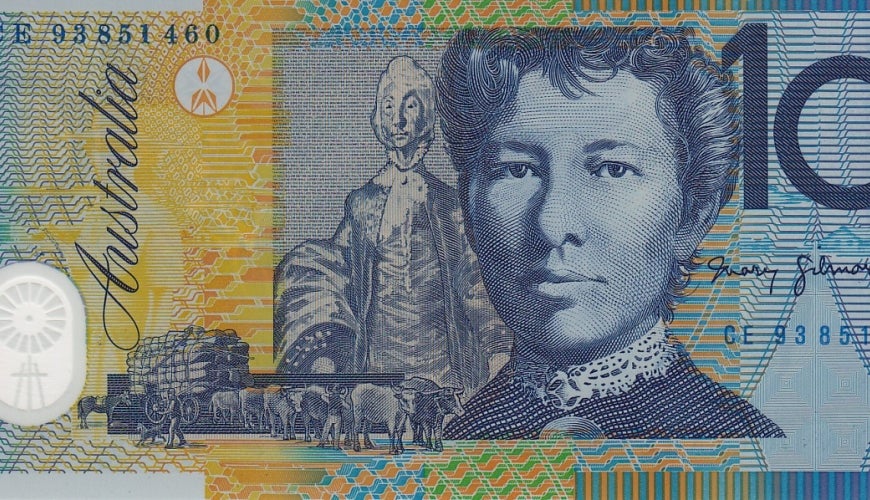Ensuring women's lifetime economic security
Archived
You are in an archived section of the website. This information may not be current.
This page was first created in April, 2013

The gender gap in retirement savings
There is a large gap between the superannuation savings of Australian men and women. Because the current superannuation system is linked to paid work, it overwhelmingly disadvantages women who are more likely to move in and out of paid work to care for family members.
Women continue to earn less than men and are more likely to be engaged in casual and part-time work, which are also contributing factors to the gender gap in retirement savings.
Right now, many women are living their final years in poverty. If we don’t act, another generation of women will face similar prospects.
- Women have significantly less money saved for their retirement – half of all women aged 45 to 59 have $8,000 or less in their superannuation funds, compared to $31,000 for men.1
- Currently, the average superannuation payout for women is a third of the payout for men - $37,000 compared with $110, 000.2
- In Australia, women working full-time today earn 16 per cent less than men.2
What is Commissioner Broderick’s plan for reducing the gender gap in retirement savings?
Commissioner Broderick is working with experts to investigate the factors contributing to the gender gap in retirement savings to inform solutions for increasing women’s economic independence over their lifetime.
One strategy to redress women’s disadvantage in the current retirement income system is to specifically recognise and reward unpaid caring. The Commission’s current research project on Valuing Unpaid Care is significant and innovative research on this topic. The report which will be launched later in 2012, will:
- identify models for reforms that will properly recognise and compensate those who undertake unpaid caring work,
- inform evidence-based development of employment and retirement income strategies (e.g. workplace entitlements, flexible workplaces, superannuation reforms); and
- provide valuable information for policy and law-makers, academics and other opinion makers.
Australian Human Rights Commission work
Commissioner Broderick is meeting with various experts and community stakeholders in this area to help the Commission develop a project plan. This project will begin in early 2009.
- Accumulating poverty? Women’s experiences of inequality over the lifecycle (15 September 2009)
- Australia's Future Tax System (Retirement Income System) - submission to the Review Panel on Australia's Future Tax System (27 February 2009)
- Listening Tour Community Report. (July 2008)
- It's About Time: Women, Men, Work & Family: A report on balancing work and family responsibilities in Australia (March 2007)
- Striking the Balance: Women, Men, Work and family: A discussion paper on balancing work and family responsibilities in Australia (June 2005)
Related information
- Australian Government Financial Literacy Foundation – Women Understanding Money
- Australian Government Office for Women – Women Understanding Money fact sheets
- Women’s experiences of paid work and planning for retirement (Women’s Health Australia study)
- Australian Government Office for Women - Women and Superannuation – taking control of your future
brochure - Workplace Gender Equality Agency: Perspective papers
- White Ribbon Australia Workplace Accreditation Program – Supports workplaces to prevent and respond to violence against women, including sexual harassment in the workplace
Pay Inequity – The Gender Pay Gap
Gender pay inequity is still proving to be a persistent issue in Australia and continues to disadvantage women. Recent statistics show that the gender pay gap is currently at 17.2%, which means females only earn 83 cents for every dollar earned by males.4 The gender pay gap measures the difference between male and female earnings as a percentage of male earnings.
Some of the key causes of the gender pay gap include the concentration of women in different occupations and job levels, the lack of investment for women’s training and the stereotypical ideas about women’s roles in the workforce. The issue of undervaluing the sectors in which women work, such as Social and Community Services (SACS) was recently raised in the landmark equal pay test case brought by the Australian Services Union and others under the new Fair Work Act 2009. The interim decision handed down in May 2011 recognised that gender played an influential part in the gender wage gap experienced by the SACS industry.
Information about the Equal Pay Case can be found on Fair Work Australia’s website here. The Commission’s submission to Fair Work Australia can also be accessed online here.
As part of the effort to encourage businesses to get involved in closing the gender pay gap, the Equal Opportunity for Women in the Workplace Agency (EOWA) has also released a series of useful online resources, including an interactive course about pay equity issues “Mind the Gap”, a pay equity audit tool and fact sheets available on their website here.
The EOWA has also initiated the ‘Equal Pay Day’ campaign to raise awareness of the important gender pay gap issue and to call on employers to take action on any gender pay gap existing in their organisations. This year, Equal Pay Day falls on 1 September 2011 and is supported by over 100 members of the Equal Pay Alliance. Information on Equal Pay Day and the Equal Pay Alliance can be found on their website here.
1 Simon Kelly, 'Entering Retirement: the Financial Aspects' (Paper presented at the Communicating the Gendered Impact of Economic Policies: The Case of Women's Retirement Incomes, Perth, 12-13 December 2006).
2 Ross Clare, 'Are retirement savings on track?' (The Association of Superannuation Funds of Australia Limited 2007).
3 Australian Bureau of Statistics, 'Average Weekly Earnings, Australia, February 2008, Cat no. 6302.0' (2007).
2 Australian Bureau of Statistics (ABS), Cat. No. 6302.0, Average Weekly Earnings – Trend data, February 2011 (released 19.05.11) http://www.whiteribbon.org.au/
